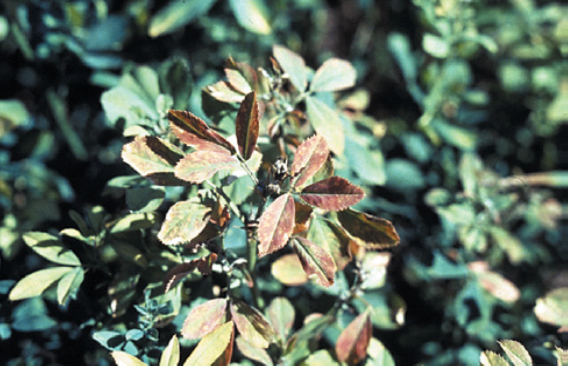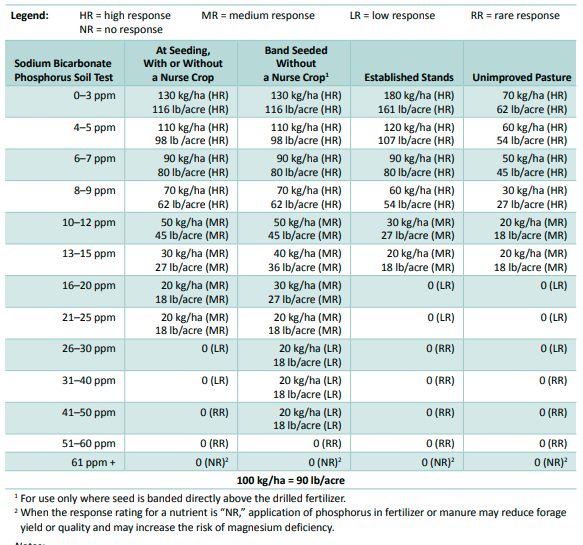Phosphate (P2O5) and potash (K2O) guidelines are given in Table 5-4 and Table 5-5. These guidelines are based on OMAFRA-accredited soil tests using the sufficiency approach, which applies the most economic rate of nutrients for a given crop year. For information on the use of these tables or if an OMAFRA-accredited soil test is unavailable, see OMAFRA Publication 811, Agronomy Guide for Field Crops.
When direct-seeding on soils that require phosphate fertilizer, establishment may be improved by the placement of a high phosphate fertilizer 5 cm (2 in.) directly below the seed. Using a grain drill with fertilizer and grass seed attachments, this placement may be accomplished by drilling the fertilizer through the furrow opener and dropping the forage seed on a firm soil surface directly behind the furrow opener. Usually it is advisable to firm the soil surface immediately after seeding.
Potash may be more effective in promoting persistence if it is applied within the 6 weeks before the start of the fall rest period. Potash deficiency is visible in alfalfa with symptoms of small, light dots on the leaflets. These dots can be on any part of the leaflet but are usually concentrated near the margins (Figure 5-34). Potash deficiency symptoms in grasses and clovers are less distinctive but result in overall slow growth and poor yield.
High soil potassium levels can result in luxury consumption of potassium by forages and subsequent nutritional problems when fed to dairy cows prior to calving. Potassium applications on soils testing over 150 ppm will not significantly increase winter hardiness and are not recommended.

Phosphate, if required, may be applied with the potash or at other times of the year. Phosphate deficiency symptoms are rare and non-specific in forages, but a shortage of phosphate may manifest itself as stunting and poor winter survival of legumes.
